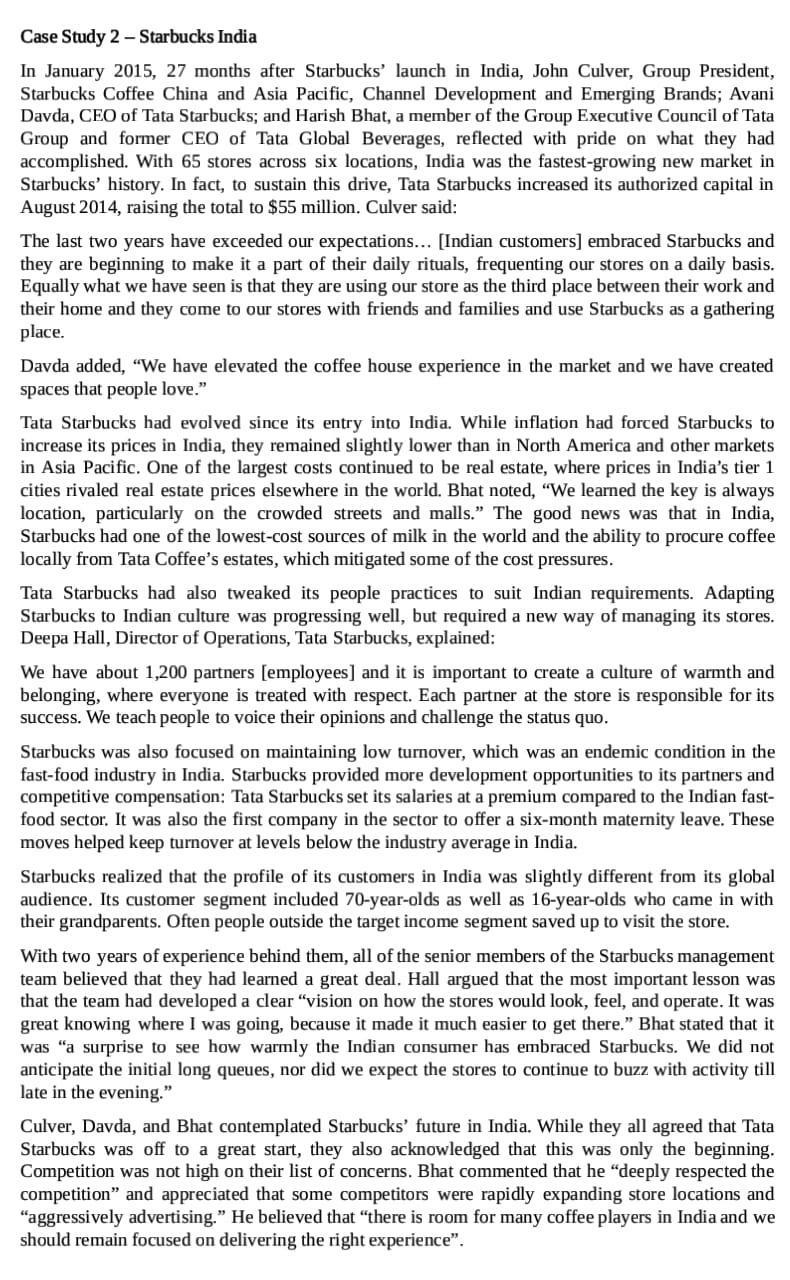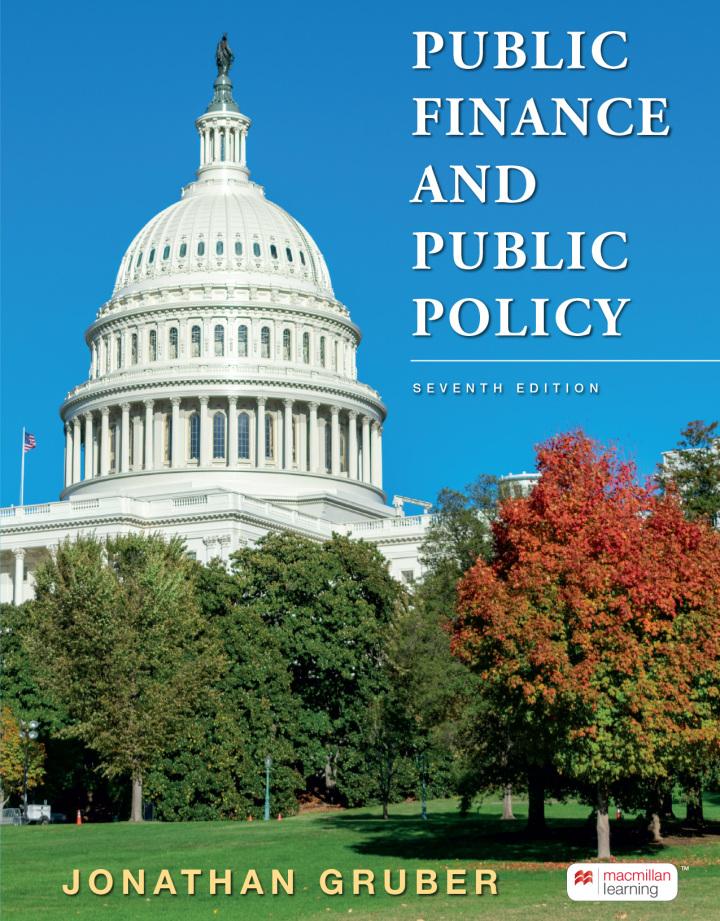Answered step by step
Verified Expert Solution
Question
1 Approved Answer
Case Study 2 - Starbucks India In January 2015, 27 months after Starbucks' launch in India, John Culver, Group President, Starbucks Coffee China and Asia

Case Study 2 - Starbucks India In January 2015, 27 months after Starbucks' launch in India, John Culver, Group President, Starbucks Coffee China and Asia Pacific, Channel Development and Emerging Brands; Avani Davda, CEO of Tata Starbucks; and Harish Bhat, a member of the Group Executive Council of Tata Group and former CEO of Tata Global Beverages, reflected with pride on what they had accomplished. With 65 stores across six locations, India was the fastest-growing new market in Starbucks' history. In fact, to sustain this drive, Tata Starbucks increased its authorized capital in August 2014, raising the total to $55 million. Culver said: The last two years have exceeded our expectations... [Indian customers) embraced Starbucks and they are beginning to make it a part of their daily rituals, frequenting our stores on a daily basis. Equally what we have seen is that they are using our store as the third place between their work and their home and they come to our stores with friends and families and use Starbucks as a gathering place. Davda added, "We have elevated the coffee house experience in the market and we have created spaces that people love." Tata Starbucks had evolved since its entry into India. While inflation had forced Starbucks to increase its prices in India, they remained slightly lower than in North America and other markets in Asia Pacific. One of the largest costs continued to be real estate, where prices in India's tier 1 cities rivaled real estate prices elsewhere in the world. Bhat noted, "We learned the key is always location, particularly on the crowded streets and malls." The good news was that in India, Starbucks had one of the lowest-cost sources of milk in the world and the ability to procure coffee locally from Tata Coffee's estates, which mitigated some of the cost pressures. Tata Starbucks had also tweaked its people practices to suit Indian requirements. Adapting Starbucks to Indian culture was progressing well, but required a new way of managing its stores. Deepa Hall, Director of Operations, Tata Starbucks, explained: We have about 1,200 partners [employees) and it is important to create a culture of warmth and belonging, where everyone is treated with respect. Each partner at the store is responsible for its success. We teach people to voice their opinions and challenge the status quo. Starbucks was also focused on maintaining low turnover, which was an endemic condition in the fast-food industry in India. Starbucks provided more development opportunities to its partners and competitive compensation: Tata Starbucks set its salaries at a premium compared to the Indian fast- food sector. It was also the first company in the sector to offer a six-month maternity leave. These moves helped keep turnover at levels below the industry average in India. Starbucks realized that the profile of its customers in India was slightly different from its global audience. Its customer segment included 70-year-olds as well as 16-year-olds who came in with their grandparents. Often people outside the target income segment saved up to visit the store. With two years of experience behind them, all of the senior members of the Starbucks management team believed that they had learned a great deal. Hall argued that the most important lesson was that the team had developed a clear "vision on how the stores would look, feel, and operate. It was great knowing where I was going, because it made it much easier to get there." Bhat stated that it was "a surprise to see how warmly the Indian consumer has embraced Starbucks. We did not anticipate the initial long queues, nor did we expect the stores to continue to buzz with activity till late in the evening." Culver, Davda, and Bhat contemplated Starbucks' future in India. While they all agreed that Tata Starbucks was off to a great start, they also acknowledged that this was only the beginning. Competition was not high on their list of concerns. Bhat commented that he "deeply respected the competition and appreciated that some competitors were rapidly expanding store locations and "aggressively advertising." He believed that there is room for many coffee players in India and we should remain focused on delivering the right experience
Step by Step Solution
There are 3 Steps involved in it
Step: 1

Get Instant Access to Expert-Tailored Solutions
See step-by-step solutions with expert insights and AI powered tools for academic success
Step: 2

Step: 3

Ace Your Homework with AI
Get the answers you need in no time with our AI-driven, step-by-step assistance
Get Started


